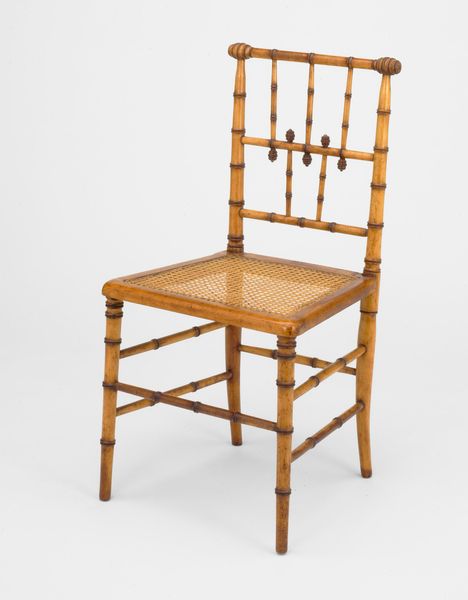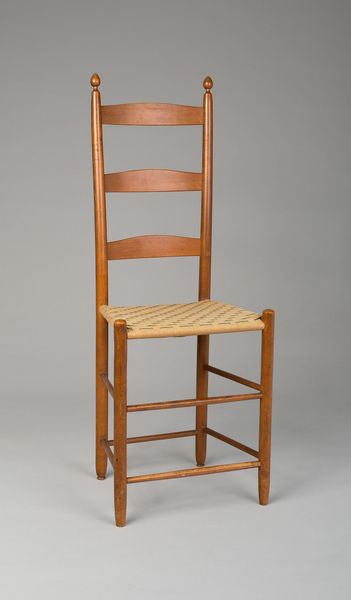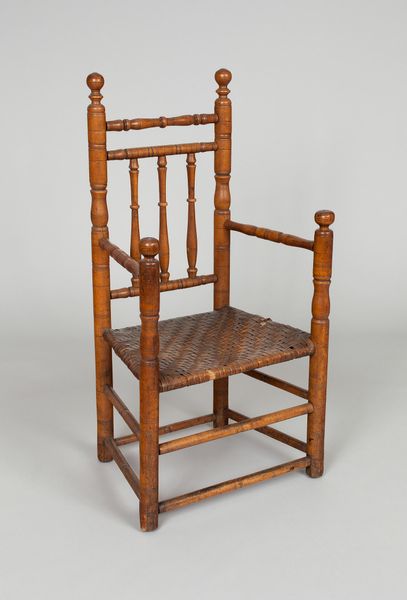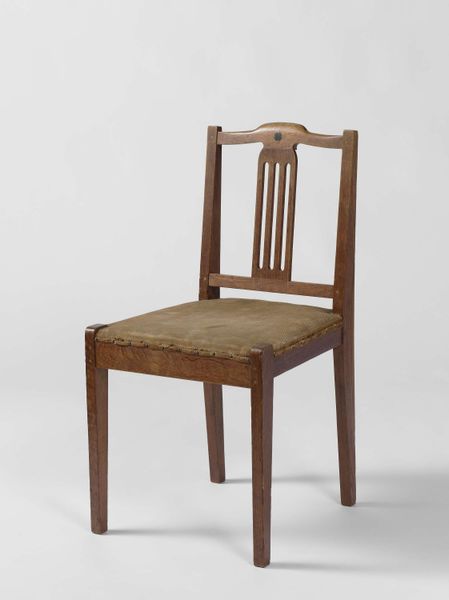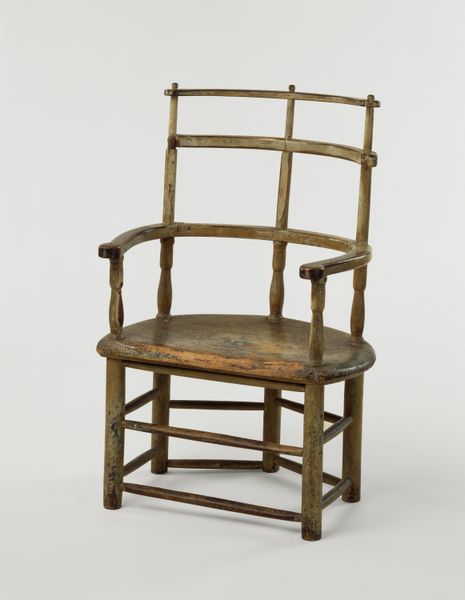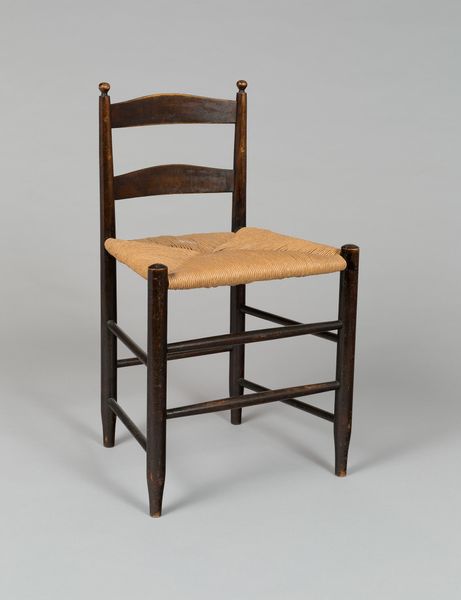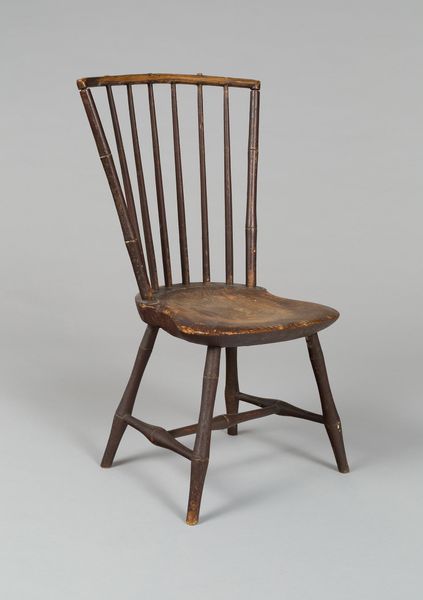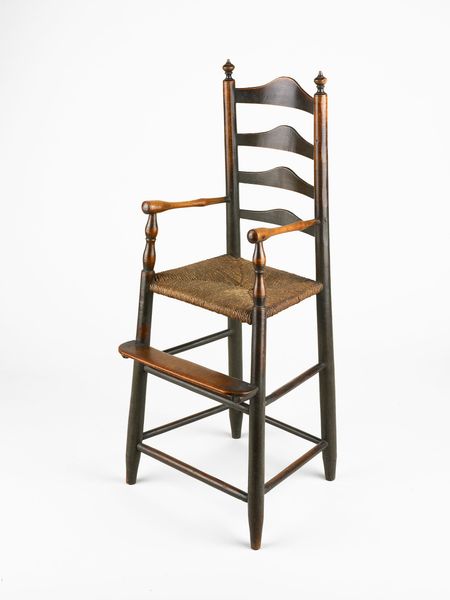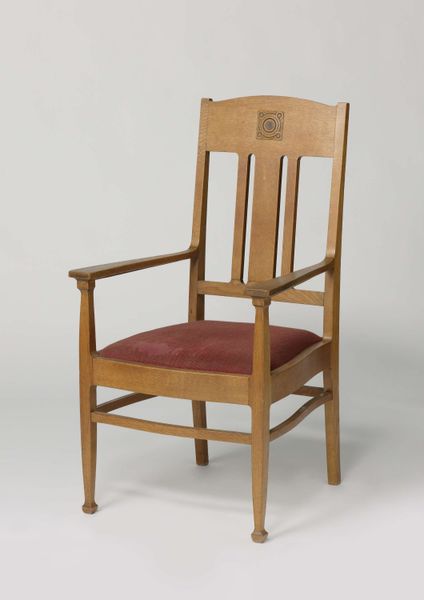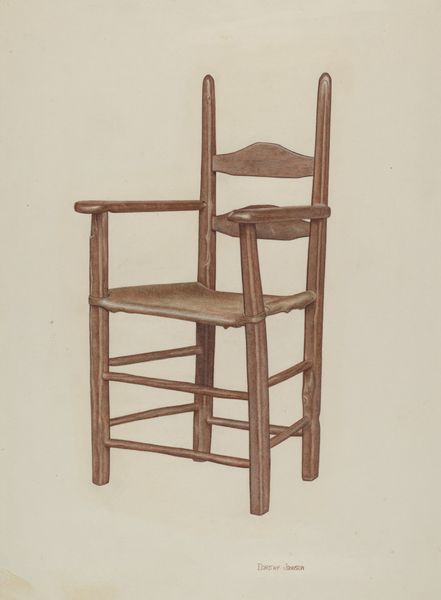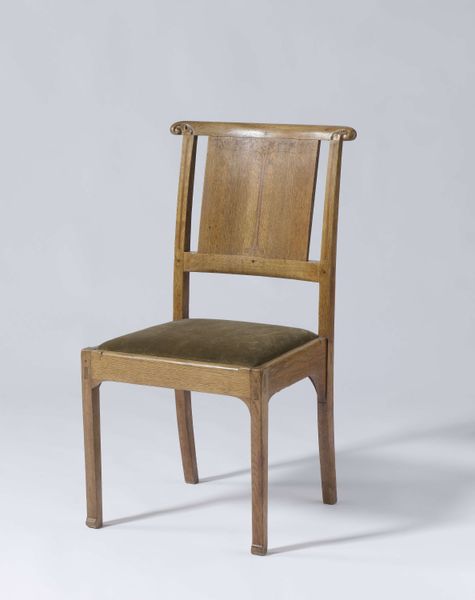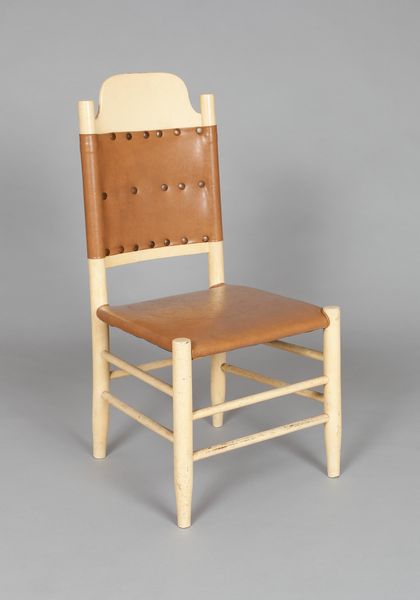
carving, wood
#
portrait
#
medieval
#
carving
#
furniture
#
wood
#
decorative-art
Dimensions: 92.7 × 29.5 × 31.1 cm (36 1/2 × 11 5/8 × 12 1/4 in.)
Copyright: Public Domain
Curator: Here we have an interesting artifact. It's a high chair, dating from between 1640 and 1670. It is currently held here at The Art Institute of Chicago, crafted anonymously in wood. Editor: It has an aura of both austerity and gentle comfort, doesn't it? I mean, the unadorned wood and simple joinery speak to a practical functionality, but the smooth, rounded finials soften the overall effect. Curator: Indeed. Child-rearing practices, even something as basic as seating, are revealing about societal values. A piece like this likely served not just a functional purpose, but also reinforced hierarchical structures within the family and the broader community. Consider its place within a Dutch home of that time. Editor: And look at the spindles on the sides and front – the subtle bulbous forms reminiscent of turned table legs or balusters in grand houses. The repeated shape offers a certain visual rhythm that likely would have unconsciously imprinted on the child using it – an early exposure to formalized design principles. Curator: Absolutely. Beyond that, the very presence of a dedicated high chair suggests a developing notion of childhood as a distinct stage of life. It marks an evolution from seeing children merely as miniature adults towards recognizing their specific needs. Though simple to our eyes, such furniture played a key role in evolving public perspectives around raising families. Editor: And consider the materiality itself, the tactile nature of the wood. A child's earliest memories shaped by the warmth and texture of the material, forming implicit emotional bonds. The specific species of wood itself holds memories, now faint whispers, about the natural world from which it came. Curator: Yes, it's a powerful thing to consider how our interaction with objects can contribute towards a deeper collective understanding and how they shape and transmit societal principles from the ruling class to everyday lives. Even the simplest piece of furniture can have resonance with many facets of our culture. Editor: A reminder of the unseen histories held within everyday objects, connecting us to the lives lived within them. A chair that offered not just support but a seat at the table of time.
Comments
No comments
Be the first to comment and join the conversation on the ultimate creative platform.
